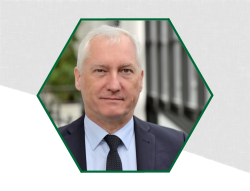In the field of laser material processing, laser beam cutting is still the commercially most important application. Several 10,000 new 2D flatbed cutting systems are built every year. At the same time, laser cutting of larger sheet thicknesses is increasingly coming into focus of potential customers. Thus, laser powers >20 kW are becoming more and more important to significantly increase productivity in laser cutting, especially for sheet thicknesses >10 mm. Furthermore, laser powers of >40 kW have the potential to compete with plasma cutting, providing better edge quality, less material consumption due to smaller cutting kerfs at higher energy efficiency, thus also lowering CO2 emissions. This market demand is challenged by the intrinsic thermal focus shift of the individual optical elements within the cutting system. Today, optical coatings for up to 20 kW of laser power are often optimized to balance performance vs. economic aspects. Minimizing focus shift can be done by, first, reducing energy deposition within AR-coatings, second, pre-correcting actual shifts by means of approximation, and third, measuring the shift and correcting it in a closed loop control. A detailed analysis of the in-situ thermal focus shift in real applications will be presented, providing an optimal combination of listed measures.
Keywords
- Focus Correction
- High-Power Laser Cutting
- Thermal Focus Shift

